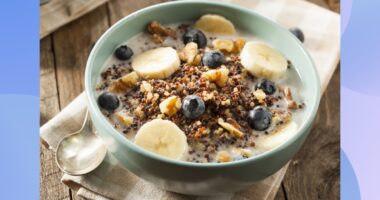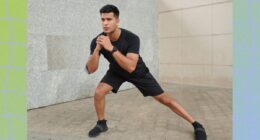
Like most healthcare workers, I was thrilled when I was eligible to receive the COVID-19 vaccine. I’ve been involved in COVID-19 patient care since the very start of the pandemic in the US, and I had seen what this virus can do to people. We all felt incredibly helpless against this incredibly contagious bug.
With time, experience, and study, we’ve learned which treatments help and which don’t. Even more importantly, we now have vaccines.
The Pfizer/BioNTech and Moderna mRNA vaccines — tested in about 18,600 and 15,000 participants, respectively — were the first available in the US via emergency FDA authorization. They remain the most effective. Trials showed about 95% efficacy in preventing symptomatic COVID-19 infection after two doses.
More importantly, no one — not one participant — who caught COVID-19 after receiving either of these vaccines died, or even got sick enough to be hospitalized. And the numbers of vaccinated participants who did get COVID-19 were very low: only 11 in the Moderna trial (compared to 185 who received placebo), and nine in the Pfizer trial (compared to 169 who received placebo). These numbers are real reason to have hope!
How it felt to receive my COVID-19 vaccine — and what happened next
So, on January 3rd, I strode into our hospital employee vaccination clinic and almost cried with joy as I got my jab of the Moderna vaccine. Yes, I felt yucky the following day: headache, body aches, fatigue. These mild, flulike symptoms are common after many immunizations, and especially so after these COVID-19 vaccines. I worked from home and took Tylenol, and was fine in a matter of hours.
There’s nothing like a real-life test to drive home the need for vaccines. While I was getting my first dose, my husband was at work. We learned later that he had had a high-risk exposure to COVID-19 that very same day (ironically, he does not work in healthcare, but in professional sports). We went into strict quarantine right then.
Alas, seven days after his exposure, he came down with fever, chills, fatigue, congestion, cough. Two tests confirmed full-blown COVID-19.
Of course my husband wore a mask and we tried to be socially distant. But with two kids in remote school, me trying to keep up with virtual clinical work, and no chance of allowing anyone in to help us, he inevitably got pulled into the day-to-day survival of the household. And seven days after his symptoms started, our ten-year-old son had fever, chills, fatigue, congestion, cough. He was also COVID-positive. And he has asthma.
Aggravated asthma, coughing, and exposure to the virus
Actually, both my husband and our son have asthma, but my son’s asthma was especially aggravated. He coughed and coughed. I administered his breathing treatments, sometimes in the middle of the night, and admittedly not always while wearing a mask. I couldn’t have had more continual high-risk exposure to this virus, far more high-risk than when I worked on the COVID inpatient ward in April.
READ RELATED: How do I stop my excessive drooling? Dr MARTIN SCURR answers your health questions
But during that whole month living among highly symptomatic COVID-infected loved ones, I was being tested regularly through my hospital’s occupational health department, as well as by a clinical trial looking at vaccine effectiveness among healthcare workers. I tested negative four times.
One dose, three solid weeks of high-risk exposure, no infection.
There is still one mystery: our nine-year-old daughter never got infected. She was tested three times that month, all negative. We don’t think she had prior asymptomatic infection, because if she had, we all would have been infected for sure. We’ve been more careful than many families because of my work — we would never want to accidentally infect anyone. “I’m immune!” she’s very proud to announce to anyone who will listen. And we think she is, somehow.
Recoveries and a second dose
My husband and son recovered well, thankfully. I received my second dose of the Moderna vaccine on January 31st, and I will say that the day after was a doozy: low-grade fever, fatigue, headache, body aches, sore arm. Again I worked from home, but this time I gave in to a nice hefty dose of Aleve. All those symptoms cleared up and I was back to normal the next day. And that week I tested negative for a fifth time.
I know that some folks are hesitating about the vaccine; some people are hesitant to receive any vaccines. Others have read the media reports on the very, very few and rare allergic reactions. It’s true that if someone has a history of a severe allergic reaction to any ingredient in the vaccine, they should not receive it. Otherwise, eligible adults can feel safe to roll up their sleeves. After all, a lot of people have died from COVID-19.
My conclusions about getting vaccinated
Both the data as well as my own real-world experience with this vaccine are incredibly positive and reassuring. I am confident that we can get to a new normal. We may still be wearing masks and social distancing to some extent — remember, vaccinated people can still get infected, it’s just less likely and they don’t get very sick. We don’t yet know if people who have been vaccinated might get an asymptomatic infection that they could spread, or about the role of viral variants.
We may still see cases of COVID-19 among people who haven’t yet received the vaccine and those who decline it. But for the most part, once most folks are vaccinated, I predict a resurgence in restaurants and travel, weddings and family dinners. And I can’t wait!
Follow me on Twitter @drmoniquetello
For more information about COVID-19 vaccines, see the Harvard Health Coronavirus Resource Center vaccine page.
Source: Havard Health










